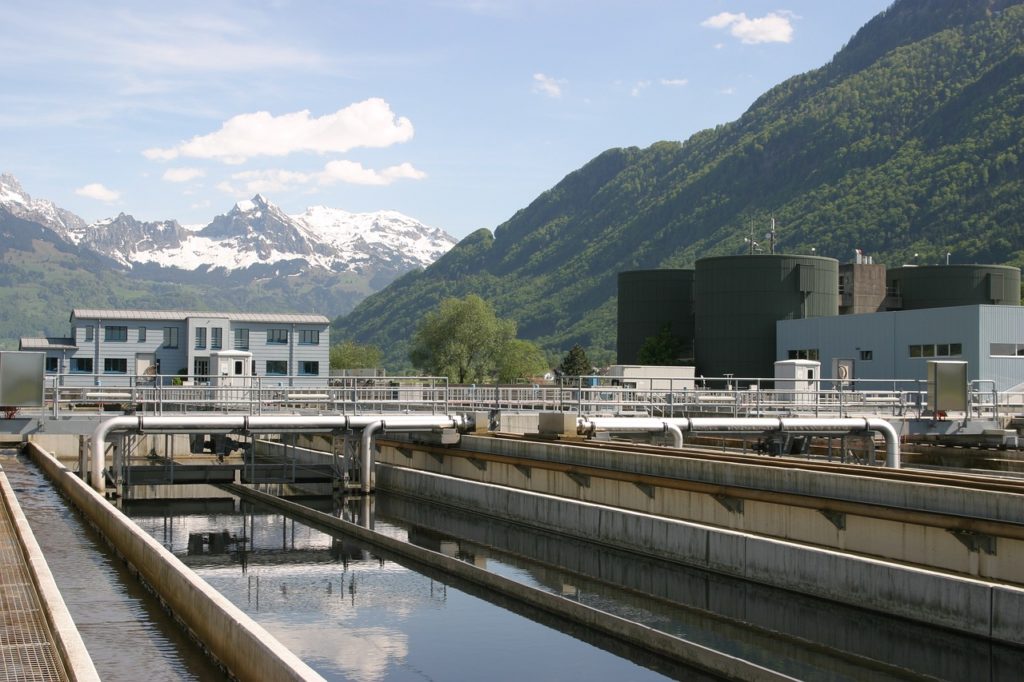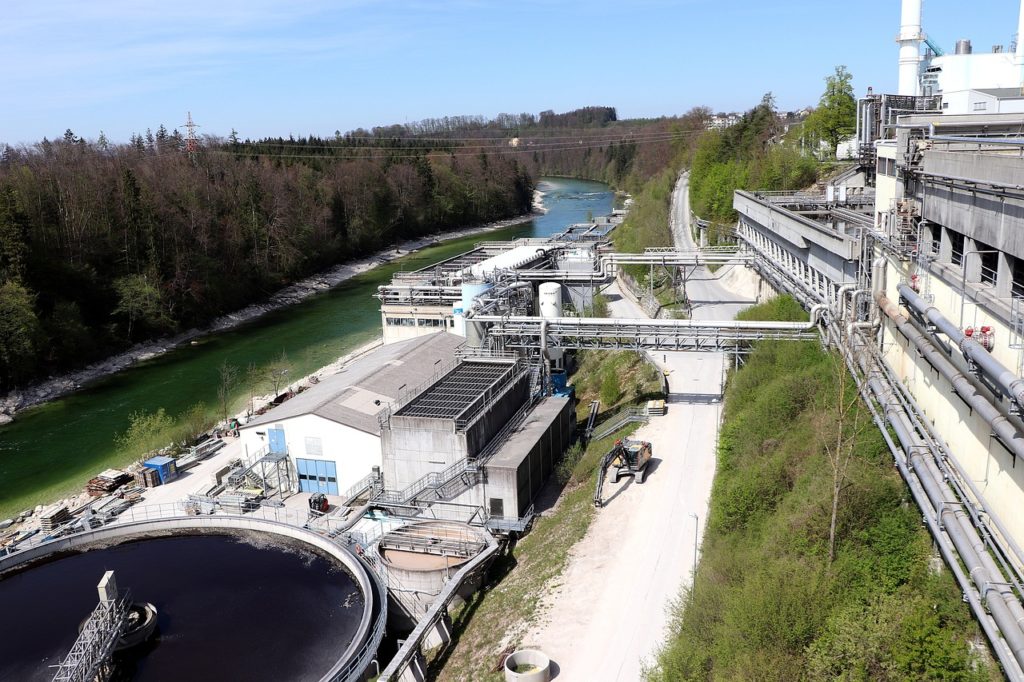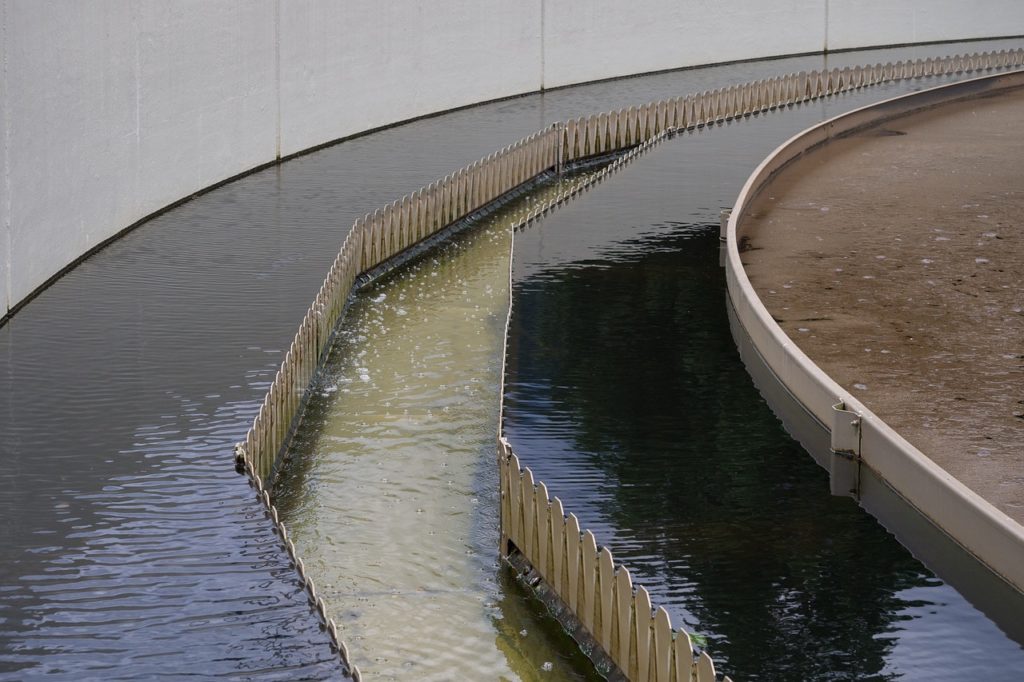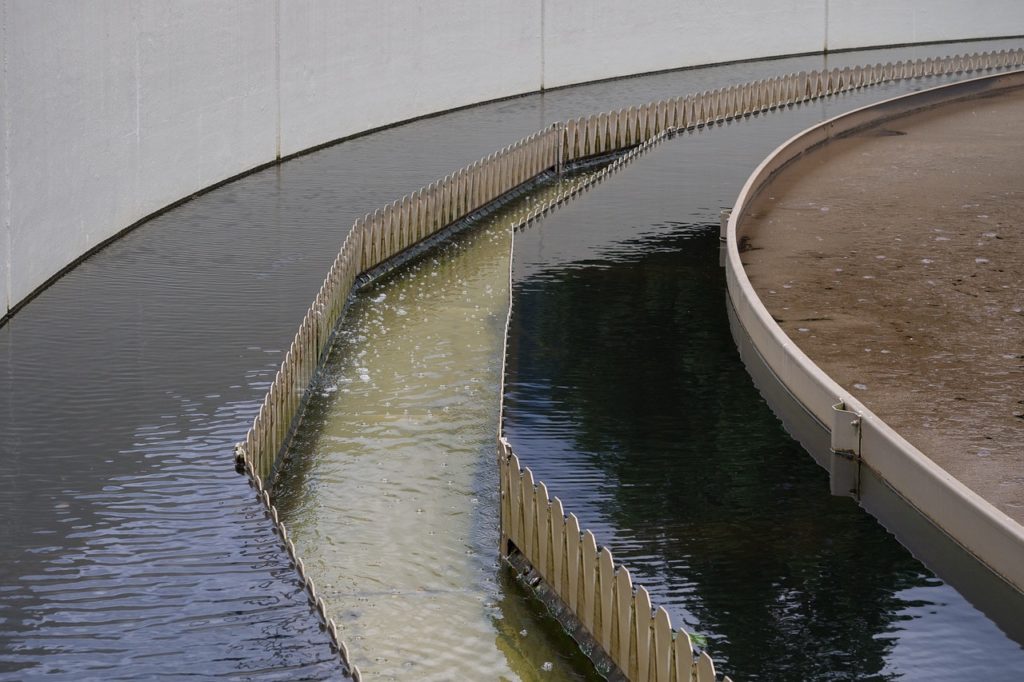In today’s world, where concerns for public health and the environment are paramount, understanding the role of wastewater treatment has become increasingly crucial. Wastewater treatment serves as a vital process that not only safeguards public health but also helps protect and preserve the environment. By effectively treating and managing wastewater, harmful pathogens and pollutants can be removed, preventing the spread of diseases and reducing the negative impact on our ecosystems. This article aims to shed light on the significance of wastewater treatment and how it plays a pivotal role in promoting a healthier and cleaner future for all.

1. Overview of Wastewater Treatment
1.1 Definition of Wastewater
Wastewater refers to any water that has been contaminated by human activities, such as domestic, industrial, or agricultural processes. It includes a wide range of pollutants, including organic and inorganic substances, pathogens, and even heavy metals. Wastewater is typically discharged into sewage systems or bodies of water, where it can pose serious health and environmental risks if not properly treated.
1.2 Sources of Wastewater
Wastewater can originate from various sources, including residential areas, commercial establishments, industries, and agricultural activities. In residential areas, wastewater is usually generated from activities such as bathing, toilet flushing, laundry, and kitchen operations. Industries and commercial establishments produce wastewater through their manufacturing processes, which may involve the use of chemicals and the generation of by-products. Agricultural practices like irrigation and animal farming also contribute significantly to wastewater generation.
1.3 Importance of Wastewater Treatment
Wastewater treatment plays a crucial role in ensuring public health and protecting the environment. Without proper treatment, wastewater can contaminate water sources, leading to the spread of diseases and the destruction of ecosystems. By effectively treating wastewater, harmful substances and pathogens can be removed, making the water safe for reuse or discharge into the environment. Additionally, wastewater treatment helps to reduce water pollution, preserve ecosystems, and safeguard the health of both humans and aquatic life.
2. Process of Wastewater Treatment
2.1 Preliminary Treatment
The wastewater treatment process begins with preliminary treatment, which involves the screening and removal of large objects, such as rocks, plastic, and debris, through the use of bar screens or grates. This step helps prevent damage to downstream equipment and ensures the smooth functioning of subsequent treatment processes.
2.2 Primary Treatment
After preliminary treatment, the wastewater undergoes primary treatment, which aims to remove suspended solids and organic matter. In this process, the wastewater is held in large settling tanks, allowing the heavier solids to settle to the bottom as sludge, while greases and lighter solids float to the surface as scum. The separated sludge and scum are then removed and sent for further treatment or disposal.
2.3 Secondary Treatment
Following primary treatment, the wastewater undergoes secondary treatment, where biological processes are employed to break down organic matter. This is usually accomplished through the use of aerobic bacteria that feed on the organic compounds present in the wastewater. The wastewater is aerated in large tanks to provide optimal conditions for the bacteria to thrive and decompose the organic matter. As a result, the majority of the dissolved organic compounds are removed, significantly improving the water quality.
2.4 Tertiary Treatment
Tertiary treatment acts as an additional polishing step, further improving the quality of the treated wastewater. This stage involves advanced treatment methods, such as filtration, chemical coagulation, and disinfection. Filtration removes any remaining suspended solids, while chemical coagulation helps to remove additional pollutants and pathogens. Disinfection processes, such as chlorination or ultraviolet (UV) light exposure, effectively eliminate any remaining pathogens, ensuring that the treated wastewater is safe for reuse or discharge.
2.5 Disinfection
The final step in the wastewater treatment process is disinfection, which aims to eliminate any potentially harmful pathogens that may still be present in the treated wastewater. Various disinfection methods can be used, including chlorination, UV disinfection, and ozonation. These processes effectively target and neutralize harmful bacteria, viruses, and parasites, ensuring that the treated wastewater meets stringent safety standards.

3. Role of Wastewater Treatment in Public Health
3.1 Removal of Pathogens
One of the primary goals of wastewater treatment is the removal of pathogens, including bacteria, viruses, and parasites, from the wastewater. Pathogens present in untreated wastewater can enter water sources and pose significant risks to public health when consumed or come into contact with humans. Therefore, by effectively removing these pathogens through the treatment process, the risk of waterborne diseases such as cholera, typhoid, and hepatitis is greatly reduced.
3.2 Prevention of Waterborne Diseases
By treating wastewater to a sufficient degree, the spread of waterborne diseases can be effectively prevented. When treated wastewater is properly discharged into the environment or reused for irrigation or industrial processes, the risk of contamination of drinking water sources and recreational water bodies is greatly minimized. This protection of water sources helps prevent the transmission of diseases and safeguard the health of communities that rely on these water sources for their daily needs.
3.3 Protection of Drinking Water Sources
Wastewater treatment is essential in protecting drinking water sources. By effectively removing pollutants and contaminants from wastewater, it prevents the contamination of surface and groundwater sources that serve as the primary sources of drinking water for communities. Without adequate wastewater treatment, the presence of harmful substances in water sources can lead to serious health problems, especially in areas lacking access to other sources of clean water.
4. Role of Wastewater Treatment in Environmental Protection
4.1 Reduction of Water Pollution
Wastewater treatment plays a vital role in reducing water pollution. Through the removal of pollutants and contaminants, such as organic compounds, nutrients, and heavy metals, wastewater treatment minimizes the negative impact of discharged wastewater on the environment. This protection of water bodies ensures the preservation of aquatic ecosystems and helps maintain the balance of fragile ecosystems, including rivers, lakes, and coastal areas.
4.2 Preservation of Ecosystems
Properly treated wastewater helps preserve ecosystems by minimizing the adverse effects of pollution on flora and fauna. When untreated or inadequately treated wastewater is discharged into water bodies, it can cause significant harm to aquatic life, disrupt food chains, and lead to the accumulation of harmful substances in the environment. Wastewater treatment ensures that pollutants are removed or significantly reduced, allowing ecosystems to thrive and maintain their biodiversity.
4.3 Protection of Aquatic Life
Wastewater treatment is crucial for the protection of aquatic life. By removing harmful substances from wastewater, such as heavy metals and toxic chemicals, it helps maintain a clean and healthy environment for aquatic organisms. Properly treated wastewater can be safely discharged into water bodies, reducing the risk of contamination and safeguarding the habitats of various fish species, amphibians, and other aquatic organisms that rely on clean water for their survival.

5. Impacts of Inadequate Wastewater Treatment
5.1 Spread of Waterborne Diseases
Inadequate wastewater treatment can lead to the spread of waterborne diseases. When wastewater containing untreated or inadequately treated pathogens enters water sources, it poses a significant risk to public health. Communities that rely on contaminated water sources may experience outbreaks of diseases such as diarrhea, dysentery, and gastroenteritis, which can be particularly dangerous for vulnerable populations, including young children and the elderly.
5.2 Contamination of Drinking Water
The lack of proper wastewater treatment can contaminate drinking water sources, compromising the safety and well-being of communities. When untreated or polluted wastewater infiltrates groundwater or flows into surface water bodies, it can contaminate the water supplies used for drinking, cooking, and personal hygiene. Consuming or using contaminated water can lead to various health problems, including gastrointestinal infections, skin rashes, and even long-term illnesses.
5.3 Destruction of Ecosystems
Inadequate wastewater treatment can have detrimental effects on ecosystems. Discharging untreated wastewater into rivers, lakes, or coastal areas can lead to the destruction of fragile ecosystems and the loss of biodiversity. The accumulation of pollutants can harm aquatic plants and animals, disrupt the natural balance, and degrade habitats. As a result, the degradation of ecosystems can have far-reaching consequences, affecting not only the environment but also the livelihoods of communities that depend on these ecosystems.
6. Advances in Wastewater Treatment Technologies
6.1 Membrane Bioreactors
Membrane bioreactors (MBRs) are advanced wastewater treatment systems that combine biological treatment with membrane filtration. MBRs use microorganisms to break down organic matter in the wastewater, while ultrafiltration or reverse osmosis membranes effectively remove suspended solids, bacteria, and other contaminants. This technology offers improved treatment efficiency, smaller footprint, and the production of high-quality effluent suitable for various reuse applications.
6.2 Advanced Oxidation Processes
Advanced oxidation processes (AOPs) involve the use of highly reactive oxidizing agents, such as ozone, hydrogen peroxide, or ultraviolet light, to degrade organic compounds and remove pollutants from wastewater. AOPs are effective in treating complex and persistent contaminants that are resistant to conventional treatment methods. They provide additional treatment options for specific pollutants, such as pharmaceutical residues, pesticides, and emerging contaminants, ensuring a higher level of wastewater treatment and environmental protection.
6.3 Anaerobic Digestion
Anaerobic digestion is a biological process that breaks down organic matter in wastewater in the absence of oxygen. It involves the use of specialized microorganisms that produce methane gas as a by-product. Anaerobic digestion is particularly suitable for high-strength organic wastewaters, such as those generated by food processing or agricultural industries. This process not only treats the wastewater but also generates valuable biogas that can be used as a renewable energy source.
6.4 Constructed Wetlands
Constructed wetlands mimic the natural filtration processes of wetland ecosystems to treat wastewater. They are designed systems in which plants, microorganisms, and soil act as filters to remove pollutants from the water. Constructed wetlands are cost-effective and environmentally friendly wastewater treatment options, providing natural habitat for wildlife and enhancing water quality. They are commonly used for tertiary treatment, polishing effluent from conventional treatment processes, and can also be used for the treatment of stormwater runoff.
6.5 Reuse and Recycling of Treated Wastewater
Advancements in wastewater treatment have enabled the safe and sustainable reuse and recycling of treated wastewater. Treated wastewater, also known as reclaimed water, can be used for various non-potable applications, such as irrigation, industrial processes, and toilet flushing. By utilizing reclaimed water, pressure on fresh water sources is reduced, and valuable nutrients can be recycled back into the environment. However, proper regulations and treatment processes are necessary to ensure the safety and quality of reclaimed water for these purposes.
7. Challenges in Wastewater Treatment
7.1 Aging Infrastructure
One of the significant challenges in wastewater treatment is the aging infrastructure of existing treatment plants and sewer systems. Many wastewater treatment facilities and pipelines were built decades ago and are now in need of repair, replacement, or upgrading. The deteriorating infrastructure can lead to inefficiencies, increased energy consumption, and the release of untreated or partially treated wastewater into the environment. Addressing the infrastructure challenges requires significant investments and long-term planning.
7.2 Non-point Source Pollution
Non-point source pollution presents a unique challenge in wastewater treatment. Unlike point source pollution, which originates from a specific and identifiable source, non-point source pollution refers to pollution that comes from diffuse sources, such as agricultural runoff, urban runoff, and atmospheric deposition. Controlling non-point source pollution requires integrated strategies, including improved land management practices, stormwater management, and public education. Implementing effective measures to address non-point source pollution is essential to ensure the sustainable management of water resources.
7.3 Financial Constraints
The high costs associated with wastewater treatment pose a significant challenge, particularly for developing countries and economically disadvantaged communities. Building, upgrading, and maintaining wastewater treatment infrastructure requires substantial financial resources, including capital investment, operational expenses, and skilled human resources. Securing sufficient funding and developing sustainable financing mechanisms are essential for ensuring access to adequate wastewater treatment and addressing the resulting public health and environmental concerns.
7.4 Limited Awareness and Education
Limited awareness and education about the importance of wastewater treatment can hinder progress in this field. Public understanding of the impacts of inadequate wastewater treatment on public health and the environment is crucial for driving support for investment and policy change. Improving public awareness through targeted education and outreach programs can help promote responsible wastewater management practices, encourage behavioral changes, and foster a sense of shared responsibility in the community.
8. Regulation and Policy Framework for Wastewater Treatment
8.1 International Standards and Guidelines
International organizations, such as the World Health Organization (WHO) and the United Nations Environment Programme (UNEP), play a vital role in developing and promoting international standards and guidelines for wastewater treatment. These standards provide a benchmark for countries to develop their own regulations and policies, ensuring the protection of public health and the environment. The WHO guidelines for wastewater use in agriculture, for example, offer recommendations on the safe use of treated wastewater for irrigation purposes.
8.2 National Legislation and Regulations
Each country is responsible for developing and implementing its own legislation and regulations related to wastewater treatment. National laws and regulations set out the standards and requirements for the treatment and discharge of wastewater, as well as define the responsibilities of various stakeholders, including government agencies, industries, and individuals. Compliance with these regulations is crucial in ensuring that wastewater treatment practices meet the necessary standards and contribute to the overall protection of public health and the environment.
8.3 Role of Government Agencies
Government agencies play a crucial role in overseeing and regulating wastewater treatment practices. They are responsible for enforcing legislation, issuing permits, conducting inspections, and monitoring compliance with regulations. These agencies also play a vital role in coordinating efforts between different stakeholders, including wastewater treatment facilities, industry operators, and the public. Through effective governance and collaboration, government agencies contribute to the implementation of sustainable and efficient wastewater treatment practices.
9. Role of Public Awareness and Engagement
9.1 Importance of Public Education
Public education is key to promoting responsible wastewater management practices and environmental stewardship. By raising awareness about the impacts of inadequate wastewater treatment, the benefits of proper treatment, and the actions individuals can take to contribute to the solution, public education can drive behavioral changes and facilitate active participation in sustainable wastewater management. Educating the public through schools, community initiatives, and media campaigns helps to create a knowledgeable and engaged population that values the importance of wastewater treatment.
9.2 Involvement of Stakeholders
Stakeholder involvement is crucial for effective wastewater treatment. In addition to government agencies, various stakeholders, including industry representatives, non-governmental organizations, and community groups, play important roles in decision-making, resource allocation, and implementation of wastewater treatment initiatives. Engaging stakeholders fosters a sense of ownership and shared responsibility, leading to better outcomes in terms of improved treatment technologies, effective policy implementation, and greater public acceptance of wastewater management practices.
9.3 Community-Based Initiatives
Community-based initiatives can significantly contribute to the improvement of wastewater treatment practices. By empowering local communities and promoting sustainable practices at the grassroots level, these initiatives create a sense of responsibility and ownership among community members. Examples of community-based initiatives include the establishment of local treatment systems, water conservation programs, and collaborative efforts to address specific wastewater-related challenges. These initiatives promote self-reliance and support the overall goal of achieving sustainable wastewater management.
10. Conclusion
Wastewater treatment plays a crucial role in protecting public health and preserving the environment. Through various treatment processes, including preliminary, primary, secondary, and tertiary treatment, as well as disinfection, wastewater is effectively treated to remove pollutants, organic matter, and pathogens. Proper wastewater treatment prevents the spread of waterborne diseases, protects drinking water sources, reduces water pollution, and safeguards ecosystems. However, challenges such as aging infrastructure, non-point source pollution, financial constraints, and limited awareness require concerted efforts from governments, stakeholders, and the public. By investing in advanced treatment technologies, implementing appropriate regulations and policies, fostering public education, and promoting stakeholder engagement, we can ensure the sustainable management of wastewater, leading to healthier communities and a cleaner environment for future generations.



